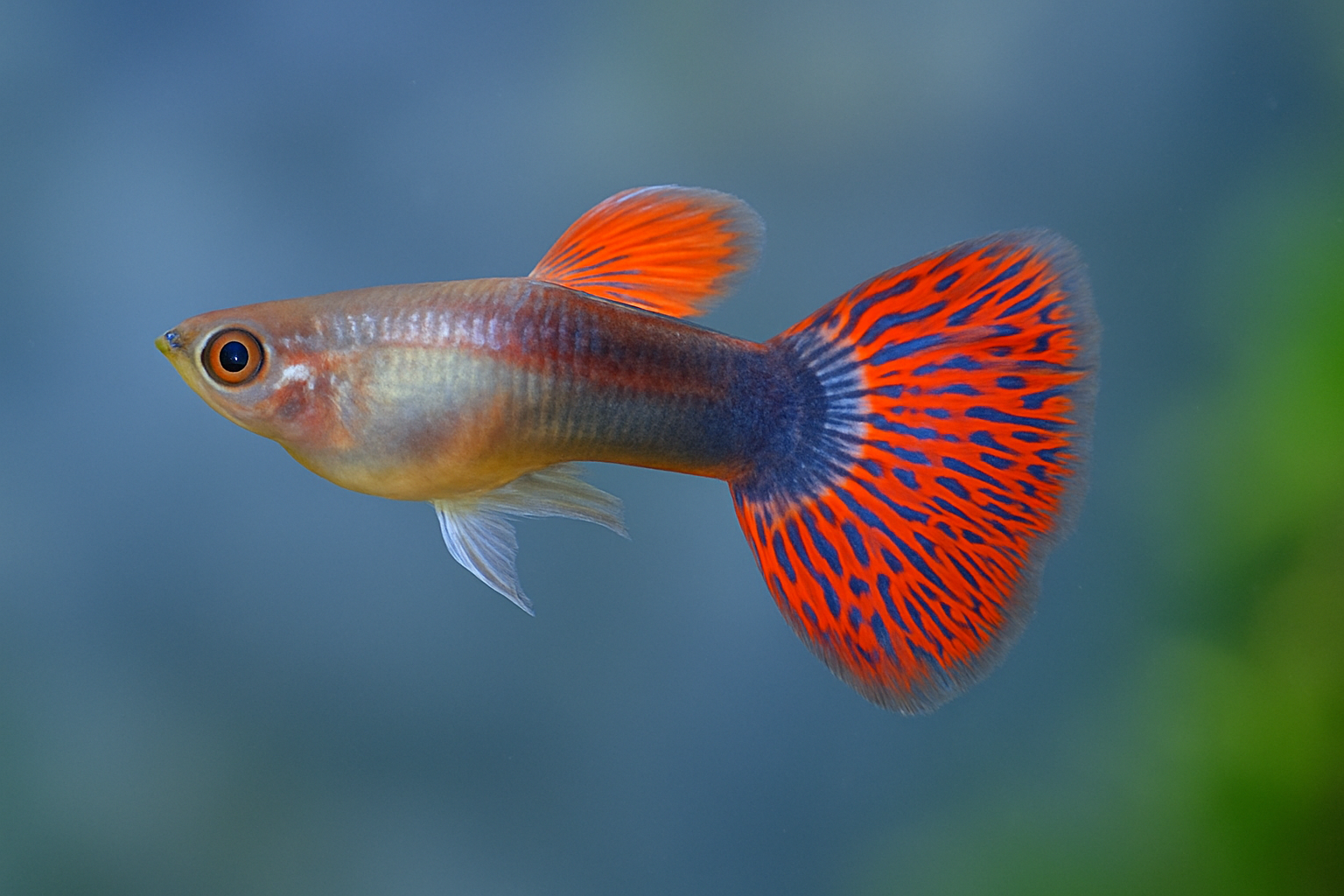The Red Grass Guppy is a breathtaking variant of the guppy fish, cherished for its vibrant red coloration and delicate grass-like patterns on its tail and fins. These fish are not only stunning to look at, but also hardy and easy to care for, making them a popular choice for both beginners and seasoned aquarists.
Native to South America but developed through selective breeding, Red Grass Guppies belong to the species Poecilia reticulata. With their radiant hues, peaceful nature, and active swimming behavior, they bring a splash of color and life to any aquarium.
In this in-depth article, we’ll explore everything about Red Grass Guppies: their appearance, ideal tank setup, feeding, breeding, common health issues, and more. This guide aims to help you maintain a healthy and beautiful aquarium full of these magnificent fish.
Appearance and Characteristics
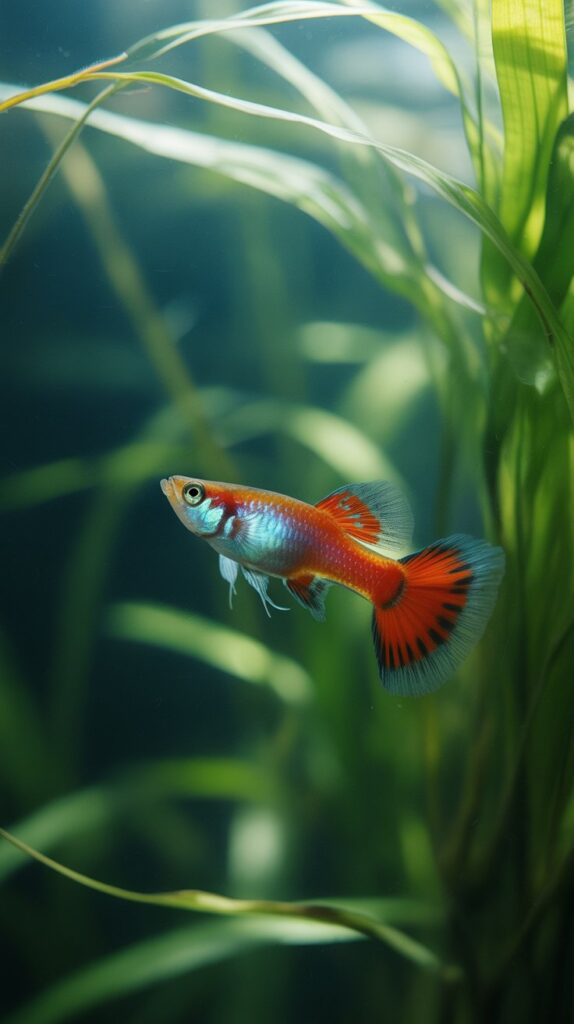
Red Grass Guppies are best known for their stunning tails that resemble blades of red-tinted grass flowing in the water. Here are some distinguishing features:
Coloration
- Main Body: Usually silver or slightly translucent.
- Fins and Tail: Covered in a fine, web-like pattern of red streaks resembling grass.
- Males vs Females: Males are more vibrant and smaller, while females are larger and duller in color.
Size
- Males: 1.2 to 1.5 inches
- Females: 2 to 2.5 inches
Lifespan
- Typically, Red Grass Guppies live around 2 to 3 years with proper care.
Ideal Tank Setup for Red Grass Guppy
Creating a suitable environment for your Red Grass Guppies is essential for their health and well-being.
Tank Size
- A minimum of 10 gallons is recommended for a small group.
- Larger tanks (20 gallons or more) are ideal for breeding or community setups.
Water Parameters
- Temperature: 72–82°F (22–28°C)
- pH Level: 6.8 to 7.8
- Hardness: 8–12 dGH
Filtration and Aeration
- Use a sponge filter or gentle HOB filter to maintain water quality without creating strong currents.
- Good aeration is necessary for oxygen levels, especially in warmer tanks.
Lighting
- Moderate lighting helps highlight their colors and support live plants.
Substrate and Décor
- Fine gravel or sand is ideal.
- Add aquatic plants like Java moss, guppy grass, or hornwort.
- Use driftwood, rocks, and hiding spots to reduce stress.
Tank Mates for Red Grass Guppies
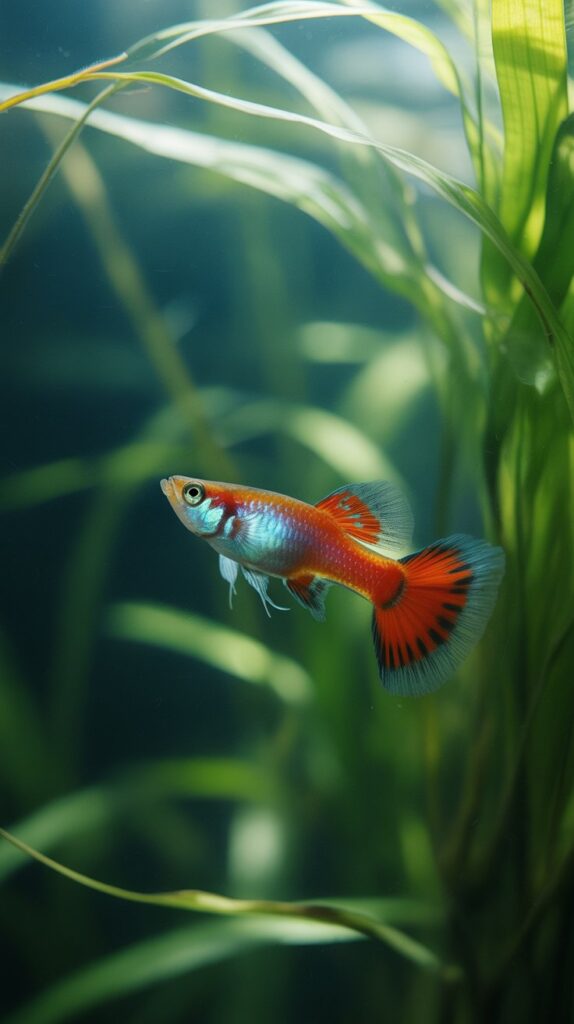
Red Grass Guppies are peaceful and do well in community tanks. Ideal tank mates include:
- Other guppies
- Mollies
- Platies
- Tetras (like neon or ember tetras)
- Corydoras catfish
- Shrimp and snails
Avoid aggressive or fin-nipping species like tiger barbs or large cichlids.
Diet and Feeding Guide
Red Grass Guppies are omnivores, and their diet should include both plant and animal matter.
Ideal Food Types
- High-quality flake food (daily staple)
- Live food: daphnia, brine shrimp, mosquito larvae
- Frozen food: bloodworms, tubifex
- Vegetables: blanched spinach or zucchini occasionally
Feeding Tips
- Feed small portions 2–3 times per day.
- Avoid overfeeding to maintain water quality.
Breeding Red Grass Guppies
Breeding guppies is straightforward due to their livebearing nature.
Mating Behavior
- Males constantly display and chase females.
- A 1:2 or 1:3 male-to-female ratio prevents stress.
Gestation and Birth
- Gestation lasts around 21–30 days.
- Females can give birth to 20–50 fry at a time.
- Use a breeding box or a separate tank to protect fry from being eaten.
Fry Care
- Feed fry crushed flakes, baby brine shrimp, or micro worms.
- Keep water clean with daily partial water changes.
- Provide plenty of plants for cover.
Common Health Issues
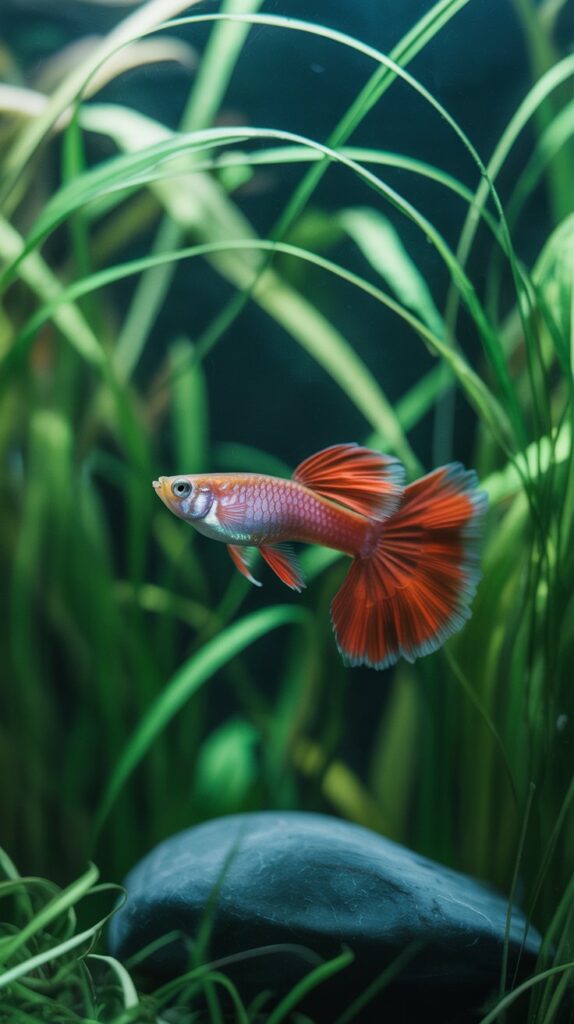
While Red Grass Guppies are hardy, they can still suffer from common aquarium diseases if water conditions are poor.
Diseases to Watch For
- Ich (White Spot Disease): Treated with temperature increase and anti-parasitic medication.
- Fin Rot: Caused by bacterial infections; improved water quality and medication help.
- Dropsy: Swollen belly and raised scales; often fatal and difficult to treat.
- Velvet Disease: Dusty appearance on the body; treated with copper-based medication.
Preventive Measures
- Regular water changes (25–30% weekly)
- Quarantine new fish before introducing them
- Avoid overfeeding
- Monitor water parameters with a reliable test kit
Enhancing Red Grass Guppy Colors
To keep your Red Grass Guppies looking vibrant:
- Feed color-enhancing foods (like those containing astaxanthin)
- Maintain optimal water quality
- Avoid overcrowding
- Provide sufficient lighting and live plants
Why Choose Red Grass Guppy?
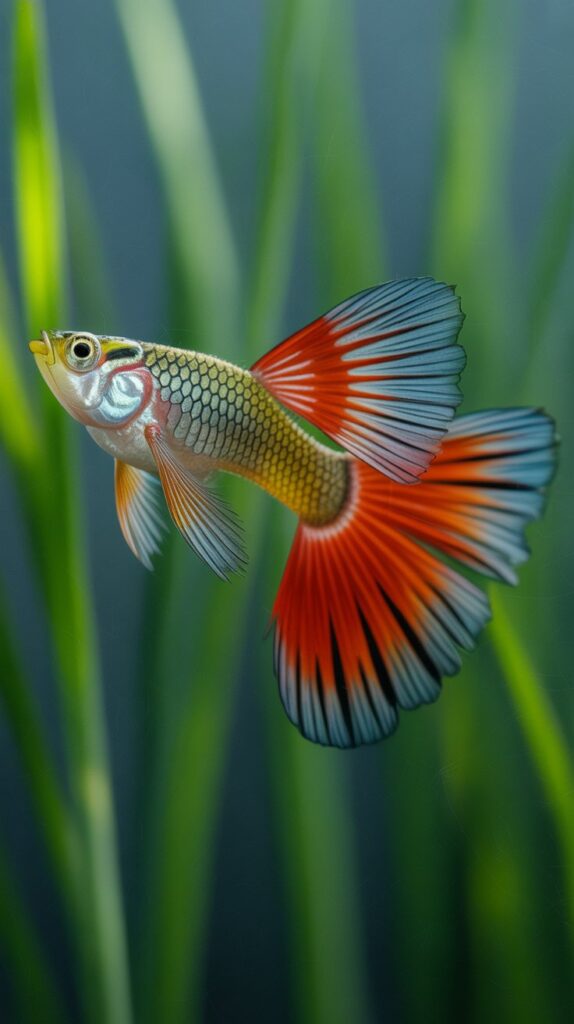
There are many reasons to include Red Grass Guppies in your aquarium:
- Stunning red patterns that stand out
- Peaceful temperament
- Easy breeding and maintenance
- Ideal for planted tanks
- Great for educational and breeding projects
Tips for Keeping Red Grass Guppies Healthy
- Always cycle your tank before introducing guppies.
- Use a lid or cover as guppies may jump out of open tanks.
- Observe their behavior daily to catch signs of stress or illness early.
- Create a routine for feeding and tank maintenance.
Red Grass Guppy in Planted Tanks
Red Grass Guppies thrive in planted tanks, where their red hues contrast beautifully with green vegetation. Some ideal plants include:
- Guppy Grass (Najas guadalupensis)
- Java Moss
- Hornwort
- Anubias
- Water Sprite
Live plants offer:
- Natural hiding spots
- Nitrate absorption
- Breeding grounds for fry
Where to Buy Red Grass Guppies
Red Grass Guppies are available in most pet stores and online retailers. Make sure to:
- Buy from reputable breeders or aquarists.
- Choose fish that are active, colorful, and free from visible deformities.
- Avoid guppies with clamped fins, sunken bellies, or white spots.
Conclusion
The Red Grass Guppy is an excellent choice for both novice and expert aquarists. With its vibrant red streaks, peaceful nature, and ease of care, this guppy strain is perfect for any freshwater aquarium. By providing the right environment, diet, and care, you can enjoy a thriving and colorful community of Red Grass Guppies for years.
FAQs About Red Grass Guppy
Q1: How long do Red Grass Guppies live?
A: They typically live 2 to 3 years with proper care and water quality.
Q2: Can I keep Red Grass Guppies with other guppy types?
A: Yes, they are peaceful and do well with other guppies and compatible species.
Q3: Do Red Grass Guppies eat their fry?
A: Yes, adult guppies may eat fry. It’s best to separate fry or provide plenty of hiding spaces.
Q4: What do Red Grass Guppies eat?
A: A balanced diet of flakes, live/frozen food, and occasional vegetables.
Q5: Are Red Grass Guppies good for beginners?
A: Absolutely. They’re hardy, easy to care for, and breed easily—perfect for new hobbyists.
Q6: Can Red Grass Guppies live in cold water?
A: No, they prefer tropical temperatures between 72–82°F (22–28°C).
Q7: How often should I change the water?
A: Perform partial water changes (25–30%) once a week to maintain water quality.
Q8: Can Red Grass Guppies live in a bowl?
A: Bowls are not recommended. Guppies need filtered, heated tanks of at least 10 gallons.
Q9: How do I tell male and female Red Grass Guppies apart?
A: Males are smaller, more colorful, and have a pointed anal fin. Females are larger and less vibrant.
Q10: Do Red Grass Guppies need live plants?
A: While not required, live plants improve water quality, reduce stress, and help fry survive.

